"Smart Growth" and "New Urbanism" Compared with "Large Lot Zoning" (Tom Lane) [ Home Page – Click Here]
(May 17, 2017) – Traditional "Large Lot Zoning" is "Greener" than "Smart Growth" within Urban Growth Boundaries . . . Copyright 2009 – 2017 . . . Tom Lane . . . Photographing California, Arizona, Nevada, New Mexico, Colorado, Utah, Oregon, and Seattle, Washington.
(May 9, 2012) Dr. Bill Eager – Kemper Freeman’s Engineer – Calculates that More Freeway Lanes Superior to Light Rail for Seattle
Dr. Bill Eager, Kemper Freeman’s Engineer, and his plan “End Gridlock Now”
(under revision as of May 9, 2012)
Dr. Bill Eager is an internationally famous traffic engineer with degrees from UC-Berkeley and the University of Colorado. Eager is the co-founder and President of TDA Inc., a transportation engineering firm with offices in Seattle, Bellevue, and Denver.
Eager is currently the chairman of the Eastside Transportation Association in Bellevue, Washington. Kemper Freeman hired Dr. Eager to develop “End Gridlock Now” (see below), a plan to decrease Seattle area traffic congestion by 36%, with only a 6% increase in pavement.
Dr. Eager has prepared three detailed PDF reports on population density, light rail, freeway lanes, and gridlock:
1 – https://smartgrowthusa.files.wordpress.com/2012/05/1st-eager-july-2001-36pp-pdf.pdf
2 – https://smartgrowthusa.files.wordpress.com/2012/05/2nd-eager-may-2003-36pp-pdf.pdf
3 – https://smartgrowthusa.files.wordpress.com/2012/05/3rd-eager-may-2003-39pp-pdf.pdf
Kemper Freeman Interview – In His Own Words – 10 Minutes –
This video interview of F. Kemper Freeman Jr., advocating Civil Engineer Dr. William Eager’s model of increasing freeway lanes by 6%, in order to reduce congestion by 36%. This link is from traffic engineer Dr. William Eager’s web site “http://TheTruthAboutTraffic.Org”
End Gridlock Now from D Simpson on Vimeo.
Tom Lane’s Other Posts on I-1125, Light Rail, and Kemper Freeman
Before proceeding, click the following link for a list of all of my posts. (Posts and Photos Copyright 2010-2011, Tom Lane, except the Video screenshots from Firefox, with appropriate credit provided.)
https://smartgrowthusa.wordpress.com/category/light-rail/
Second, please click this link, for my I-1125 You Tube Video page.
Third, for my letter to public officials advocating a yes vote on 1125, click this final link. Note: Neither the 2nd or 3rd link appears in the first link above.
Kemper Freeman et. al. vs. Christine Gregoire et. al. over Light Rail’s Constitutionality
(April 21, 2011) Kemper Freeman, noted businessman and philanthropist, is suing Sound Transit, the agency in Washington State and the Seattle area, that administers light rail (“mass transit”) lines. As I’ve reported in other posts including this one: https://smartgrowthusa.wordpress.com/2011/04/22/4290kemperfreemansoundtransitcourtruling, Kemper Freeman is suing Sound Transit for their unconstitutional plan, that violates the Washington State Constitution.
Instead of light rail, Kemper Freeman also wants to decrease congestion, by adding more freeway lanes to the region, including through Bellevue where Interstate 405 is a constant headache.
Kemper Freeman’s engineers found that light rail throughout the entire Seattle metro, including across Interstate 90 from Seattle to Bellevue, could never meet the transportation needs of the region. Instead, his engineers found that increasing freeway lanes by 6% would decrease congestion by 36%, greatly alleviating congestion (see below).
50 – 50 Tie at the Voting Booth for Light Rail (Sound Transit) – No Consensus!
Voters in King, Pierce, and Snohomish counties voted in two elections for funding light rail (via Sound Transit), in both 2007 and 2008.
In 2007, 56% voted AGAINST LIGHT RAIL, and 44% VOTE FOR LIGHT RAIL.
The OPPOSITE was true in 2008: 56% voted FOR light rail, and 44% voted AGAINST light rail.
Therefore, if you consider that everyone voted twice (in 2007, and again in 2008), and then divide the total number of votes by two, then for the 2007 and 2008 elections, 50% voted for light rail, and 50% voted against it.
Therefore, NO CONSENSUS EXISTS for light rail. Furthermore, one observes that in 2007, there was no difference in voting results between King (Seattle’s county) vs. Pierce and Snohomish. King County defeated light rail in 2007, with 56% against it, the same percentage as the others.
Indeed, although the City limits of Seattle are known for being exceptionally “liberal,” Seattle’s county – King County – is conservative, due to Bellevue, Issaquah, the Snoqualmie Valley, Kent, Burien, Federal Way, and Auburn. This is, in part, defined by conservative religious groups who are also conservative on economic issues (and, a preponderance of non-religious conservative property owners who think the same way), in the distant suburbs of King County. Generally, however, there is a very substantial conservative movement in the entire region, contributing to record ratings for conservative radio hosts.
Second, in the 2008 election, it’s interesting that Pierce County rejected light rail in 2008, while the other two counties approved it. This is significant, given that the earliest portions of the line, I think, were built in Pierce County. Clearly, they do not like the train, or else they would have voted for it, after riding it for 5 years.
Furthermore, residents of Pierce County often leapfrog commute on their way to Seattle, the Kent Valley, and Bellevue. Leapfrogging means that their commutes are longer than necessary, due to the Urban Growth Boundary blocking off land from growth. In addition, Pierce County has been the most Republican of the three counties in the recent elections.
2007 and 2008 Sound Transit Results – CLICK TO ENLARGE TO READ THE ELECTION RESULTS –
Bottom Line: Since the combined results of two rail elections in 2007 and 2008 were essentially “tied,” there is no overwhelming approval of light rail among residents of Metro Seattle.
Despite the fact that half of metro-area residents who favor increasing traffic capacity, Sound Transit and the Puget Sound Regional Council llectively continue in their very inefficient and costly efforts to increase light rail lines, while failing to increase freeway lanes.
In the aftermath of these last two weeks of disturbing actions by the state in purchasing light rail for an unconstitutional span in Bellevue – apparently without considering Kevin Wallace’s 2nd alternative alignment (the 1st, to my understanding, was “Vision Line”?) – and, throwing out Kemper Freeman’s light rail lawsuit out of court, we need to urgently spread the word about the Illegality (i.e. unconstitutionality) of Sound Transit.
Links to Kemper Freeman’s Engineering Data
CONSOLIDATE WITH ABOVE LINKS
Click the links below for Kemper Freeman”s Engineering Studies, prepared by Dr. William Eager of TDA Inc. of Seattle and Denver. The blue study below is from the American Dream Foundation at this link: http://americandreamcoalition.org/landuse/densityconge.pdf.
I have repeated these links on several of my web pages, since with few exceptions, the Seattle media is heavily biased in favor of mass transit and smart growth. I would like to inform voters that Sound Transit’s efforts will not help the region’s congestion. I hope that others will forward Kemper Freeman’s studies, so that we can add more freeway lanes, and increase Seattle’s economic productivity.
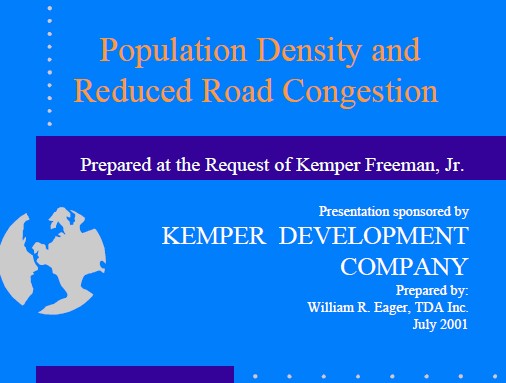
See this study at the American Dream Coalition: http://americandreamcoalition.org/landuse/densityconge.pdf.
Additional studies on how to end Seattle gridlock can be downloaded at the burgundy TDA Inc. web site: http://www.tdanet.com/tda_inc_downloads_page.html
Additional Traffic Studies: INRIX – “the National Traffic Scorecard”
INRIX rates traffic conditions in about 100 US metros, as shown in an html table at this link: http://scorecard.inrix.com/scorecard/Top100Metros.asp
In Seattle, traffic ranked 10th out of 100: http://scorecard.inrix.com/scorecard/MetropolitanDetails.asp?ID=10
Since 2006, despite light rail, over the past 5 years, Seattle traffic has not improved, with fluctuating scores from the 6th to the 10th worst in the nation.
Dr. William Eager’s “Washington Traffic Institute,” Web Site –
This site has a variety of tools for those who advocate more freeway lanes, including a study on the Seattle area from the CATO Institute.
Other Web Sites from the 2007 and 2008 Sound Transit Election Years -Still Relevant Today
The next link shows the 8 pages of the informational election tabloid issued by the Washington Traffic Institute on August 23, 2007. It described the aforementioned “Roads & Transit” package of that year, defeated 56% to 44% in November 2007: http://www.bettertransport.info/rt/WTItabloid-backcover.pdf
The Eastside Transportation Association includes many high profile individuals on its Board of Directors, including traffic engineer Dr. William Eager:
This page contains engineering data and info on the 2007 vote that is still relevant today:
http://www.bettertransport.info/rt/
This is a great article on Sound Transit from UW Geography (and Land Use) Professor Dr. Richard Morrill, who has studied with Dr. William Fischel of Dartmouth:
My Challenge to Democrats who generally advocate Sound Transit
I’m non-partisan and here’s my challenge to local Democrats … Why have you ceased improving Seattle roads for the Middle Class, and why have you passed so many regulations on construction companies, such as Impact Fees and the Washington State Growth Management Act (under Gary Locke)? Why have you caused Seattle’s traffic to become the 6th worst in the nation, causing the Middle Class to burn more fuel than necessary, since they drive under the speed limit – getting less miles per gallon? What is so important about building mass transit that you cause the Middle Class to spend at least 30% more on gasoline than if we had a freeway system comparable to Vegas or Phoenix (see below).
As as a result, formerly blue collar Democrats (especially in blue collar Pierce County), now vote Republican, as would be predicted. I would predict that Dave Reichert (R-Bellevue) will easily win for Governor in 2014.
Seattle Congestion vs. Phoenix and Las Vegas
In contrast, Phoenix, who is often blamed for horrible urban sprawl eating up the desert (despite their great system of desert Sonoran desert parks, golf courses, and bike paths), has the nation’s 19th worst traffic out of 100 metros. Las Vegas is even better, scoring at 35th, and Tucson is way down at 88th (according to INRIX, above).
Therefore, the argument that auto use causes sprawl along with heavy traffic is not supported by these large desert metros. Phoenix, in particular, has a master plan of building a transportation network primarily of new freeways – with limited light rail – extending for the net few decades, as discussed and illustrated in the book “Metropolitan Phoenix” by Arizona State University professor Dr. Patricia Gober.
Phoenix’ new SR-303 serving the West Valley is scheduled to open in mid-May, 2011. This will relieve pressure from surface streets in residential neighborhoods and also from US-101.
For an interactive map of the Phoenix freeway system below, click this web site: http://www.azdot.gov/highways/valley_freeways/index.asp
More from Michael Ennis of the Washington Policy Center
Michael Ennis has published a variety of articles and monographs on problems with light trail. All of his publications are listed at The Washington Policy Center, where he serves as Director for their Center for Transportation, at this web site: http://www.washingtonpolicy.org/blog/author/mennis
In particular, Ennis’ publication “The Facts on Light Rail: A comparative analysis of light rail systems in six West Coast cities,” is especially informative, downloadable from this link: http://www.washingtonpolicy.org/publications/brief/facts-light-rail
Dr. Robert Bruegmann on Density and Mass Transit
Kemper Freeman”s engineers did find that light rail works in Manhattan due to very high densities. Other researchers have also concluded that light rail only works with high densities, such as in Tokyo, Japan. Dr. Robert Breugmann of the University of Illinois, writes that light rail requires densities of at least 10,000 persons per square mile; article in the J. of Transport and Land Use: http://robertbruegmann.com/_images/publications/JLUT.pdf. Seattle’s density (i.e. the entire urban area including Bellevue, Everett, the Auburn Valley, Tacoma, etc.) is about 2,500 persons per square mile.
However, Bruegmann continues by stating that even with very high densities, that light rail only works when “trip origins and destinations are tightly clustered, for example, when one side of the trip is a place with a very high density of jobs, for example a downtown or an airport.” Given that a density of 10,000 will never occur in the Seattle metro, and that most jobs are in the suburbs, then light rail is impractical for Seattle.
Bruegmann points out that the majority of urban US cities fall well below 10,000 persons per square mile. Wendell Cox of Demographia also found the same thing when he did his calculations (see the table below). Furthermore, Breugmann also says that in contrast to decades ago, jobs are now decentralized in the suburbs, and not concentrated in downtown areas.
Light Rail near Sea-Tac Airport:
Bruegmann on You-Tube:
Dr. Bruegmann, author of “Sprawl: A Compact History,” presented this hour presentation at Case Western Reserve University in Cleveland, Ohio in 1998:
Light rail is an outdated concept, since most cities are “Polycentric.”
Indeed, the concept of light rail lines connecting these “regional growth centers” is based on the so-called “monocentric” model of a city, where most of the jobs are in the traditional downtown area, and most of the workers live in the suburbs. However, today’s cities are “polycentric,” with jobs spread out over large sprawling metro areas. In the Seattle area, large companies are found in suburbia, including Microsoft in both Bellevue and Redmond, Weyerhauser in Federal Way, and Boeing’s many manufacturing plants in Renton, Auburn, Everett, and so on.
Furthermore, given employment decentralization, it doesn’t make sense to place hundreds of towering condos within the City limits of Seattle. The Puget Sound Regional Council plans to nearly double Seattle’s population from 500K to 900K within the next 30 years (The PSRC’s “Vision 2040”). How do they know that new firms will choose to locate in the Seattle city limits, where taxes are very high compared to the suburbs? Indeed, a major reason for employment decentralization, and office towers in the suburbs, is the low cost of land and lower taxes.
Indeed, Kemper Freeman owns Bellevue Square and much of downtown Bellevue. Bellevue is a classic mid-century, “mixed-use” suburb, with office towers combined with retail, housing, great schools, and other amenities. This post highlights Bellevue’s amenities: https://smartgrowthusa.wordpress.com/2011/04/17/bellevue2/.
Most people who live in Bellevue, or any other Seattle area suburb, never enter the Seattle city limits. Therefore, the continued push for light rail lines into downtown Seattle, from the suburbs, is based on the monocentric model, that hasn’t existed in the Seattle area for decades. The same can be said for metro Denver, where residents of Boulder, Ft. Collins, Centennial, Aurora, and Arvada may never enter the Denver city limits. Likewise in the San Francisco metro, where people try to live close to where they work. Those in San Jose / Silicon Valley are not going to commute from Santa Rosa / Marin County.
While Sound Transit doesn’t understand that the monocentric model behind their light rail plan is outdated, national retail and restaurant chains certainly have moved beyond it. For example, you don’t find just one mall with one Sears and one J.C. Penny in Seattle. Instead, there are malls all over the region along Interstate 5 , from Olympia to Everett (100 miles). And, there are hundreds of Safeways and McDonalds, dozens of Starbucks, and car dealers representing every major automaker, located every 10 miles, between Olympia and Everett.
Baby Boomer Planners and their Overvalued Ideas – Light Rail and Streetcars
Therefore, with astonishment, as a young person half the age of all these baby boomer smart growth / mass transit planners professors, I cannot understand why they are promoting outdated, impractical ideas. Same thing with the Editorial Staff at The Seattle Times and The Stranger, along with Seattle based “Grist,” who are all pro-light rail and seem to oppose adding more freeway lanes. Yet on the other hand, it often takes a long time for overvalued ideas to go out of style. I mean, it’s been 50 years since the Surgeon General just pronounced smoking as deadly, yet people still light up in the movies. Eventually, the smart growth planners and politicians will retire, and we’ll take their place as generations X and Y. We love cars, and just about anything that’s portable and “on-the-go,” (i.e. cell phones, netbooks, WI-FI, and so on).
Another idealistic and impractical idea for meeting Seattle’s traffic problem is, of course, you guessed it — The Seattle Streetcar:

Seattle Streetcar on Alaskan Way, heading north to Pacific Place. Note the tracks that can be VERY dangerous for cyclists and pedestrians!
Baby Boomer, Light Rail Planners and Professors are “Stuck in the 1970’s” in Berkeley and Boulder
Indeed, those who continue to propose light rail lines with regional growth centers, within urban growth boundaries, are “stuck in the 1970’s,” when the anti-sprwal movement began simultaneously in Northern California, Oregon, and Boulder, Colorado. However, generations X and Y today have no issues with sprawl, since just like our parents, we want large homes on large yards, as shown by the recent April 2011 results in the Smart Growth Study from the National Association of Realtors.
Meanwhile, continuing to construct light rail lines between the suburbs and downtown, and also between so-called “regional growth centers” (i.e. under the Puget Sound Regional Council in Seattle, or the Denver Regional Council of Governments in Denver), fails to help congestion and air pollution, since we’re refusing to build more freeway lanes. This wastes gas mileage and increases ozone pollution, as cars are faced to idle for hours a week, stuck in traffic. It can take up to 2 hours during rush hour, to travel from Bellevue to the Kent Valley, in the Seattle area. Several days each summer, Denver violates Federal ozone levels. And, of course, the entire Denver metro is world famous for smart growth and light rail, and its population density is higher than Seattle.
Breugmann Defines our Real Problems
Indeed, Breugmann points out that our real problems will become the fuel sources for our cars and buses. Gas is nearly $5 a gallon in some areas, as of this writing. Breugmann points out that right now, we can only imagine what tomorrow’s cars will look like, in terms of smaller size and new sources of fuel. I remember seeing the first smart car, ever, in Durango, Colorado. Durango is light years ahead of Seattle, in terms of providing terrific infrastructure for bicycles, and passive solar in homes. Ashland, Oregon is similar, with a passive solar ordinance requiring that buildings do not shade each other. Here’s one of their City buildings with solar panels:

While Seattle can’t give up the antiquated light rail idea, Ashland, Oregon and Durango, Colorado are way ahead, with their solar energy programs.
Indeed, Breugmann points out that distracting ourselves with light rail lines prevents making real progress on new modalities of auto transportation.
Bicycling: A Great Solution for the Hardy Amongst Us
Here’s a cyclist next to a pea patch north of downtown Seattle in a smart growth condo area. In contrast to light rail and streetcars, cyclists consume no tax money, and serve to better themselves with physical fitness. In addition, bicycles have become much lighter and more efficient, just as cars have. Some bicycles now have 27 gears, making it much easier to climb hills. Braking systems with disk brakes make it much easier to stop in wet weather going downhill. Front shocks are now standard on most mountain bikes, smoothing the ride over gravel roads and potholes, accommodating those with back injuries.
Note all the condos in the distance on Capitol Hill. Overall, however, bicycle riding statistics are very low in large metros, and are unlikely to increase. Building bike lanes is expensive, and most cyclists do not want to ride on the roads (and, they shouldn’t, unless they’ve learned bike safety). However, in small college towns, ridership can approach or even reach the double digits (in terms of total commuting trips). In Ithaca, NY (home to Cornell University and Ithaca College), 50% of all trips are walking and cycling.
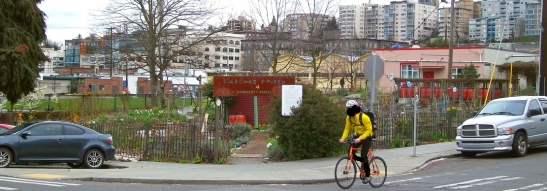
Towering Condos on Capitol Hill NE of downtown, a Pea Patch, and a cyclist. His face is obscured due to the web site privacy policy.
Dr. Bill Wattenburg of KGO Radio Tells President Obama to Run Cars on Natural Gas
On that note, Dr. Bill Wattenburg of KGO radio publishes this letter for his listeners to send to President Obama, a baby boomer who supports smart growth and mass transit, asking for Obama to issue an executive order requiring that all federal cars run on natural gas (Web site: http://kgoradio.com/Article.asp?id=2068523&nId=0&spid=33179)
Natural Gas for Cars:
An all win, no lose, initiative that will please the country,
and stop the blackmail from foreign oil suppliers.
Send an email to the White House at the following link: http://www.whitehouse.gov/contact
-or- The White House Fax (most effective) is: 202-456-2461
Dr. Bill Wattenburg; billwattenburg2@yahoo.com, http://wattenburg.us; January 2, 2011
To: President Barack Obama
Subject: Easy way for you to drop gas prices to $2 a gallon for American workers. Otherwise, they will soon be paying for $5 gas — and blaming your administration.
Mr. President:
Here is an all-win, no-lose, plan that will please the country and stop the blackmail from foreign oil suppliers. The outrage of $5 gas is coming soon – probably next year. It will wipe out the recovery and your administration in the next election. It must be stopped. Challenge the foreign oil suppliers with America’s most abundant and cleanest transportation fuel, NATURAL GAS. We can still use all the ethanol our farmers can make in dual-fuel cars. Conversion to natural gas cars sounds like a long and expensive transition. Not at all! You don’t need to force anyone. All you need to do is start the ball rolling. And there is a clever way to do that without any government subsidy, believe it or not! Nationally known and syndicated financial expert Bob Brinker came up with the deceptively simple, genius idea described below.
Mr. President, please sign a simple executive order tomorrow that says that all federal vehicles purchased after, say, January 1, 2012, must run on NATURAL GAS as well as other fuels such as gasoline, diesel, or ethanol. Such dual-fuel vehicles are already being used by smart companies all over the country. No new design or technology is needed. (Federal agencies can op out for a while if they have no easy natural gas supply.)
Why does this work? The federal government is the biggest purchaser of new vehicles. The automakers already supply tens of thousands of cars that run on natural gas or gasoline (or ethanol) for utility companies and taxis companies all over the country who gladly pay a higher price for these dual-fuel vehicles because their fuel costs are reduced. With the enormous federal government market for natural gas vehicles, car manufacturers will quickly make natural gas cars and light trucks available to everyone at no big price increase over conventional gasoline cars. Natural gas is available in almost all urban areas where most of the commuting is done. It is easy to fuel natural gas cars at home. But this initiative does not force any private citizen to buy natural gas/dual-fuel cars.
1. Natural gas is the only significant “alternative transportation fuel” that will be available over the ten to twenty years. And it is available everywhere, right now!
2. Dual-fuel natural gas+gasoline(or ethanol) cars will suddenly be available to the general public at no increased cost. Car makers now deliver them for utilities and Taxis.
3. The middle east oil countries know how much natural gas we have. They are terrified that we start using it and less of their oil. They will bring the price of gas down to $2 a gallon and keep it there to discourage our conversion.
This is a all-win, no-lose initiative for you. All you have to do is sign a piece of paper. Any agency that does not want to buy natural gas, dual-fuel vehicles can op out. But your executive order alone will cause foreign oil suppliers to think twice about blackmailing the U.S. for oil. It tells them where we are going — and that we will not need their oil in ten years or so.
The biggest worry for the foreign oil suppliers is that we will start using our enormous natural gas supplies, now estimated to supply the U.S. more than 100 years. The price of gasoline will drop to $2.00 per gallon or less – even before we convert large numbers of our vehicles to natural gas. American workers – and the economy — will applaud you.SIMPLY ANNOUNCING A REAL U.S. GOVERNMENT INITIATIVE TO USE NATURAL GAS FOR TRANSPORTATION FUEL WILL BRING THE PRICE OF CRUDE OIL DOWN BELOW $50 A BARREL. – Dr. Bill Wattenburg
Density Table from Demographia from Wendell Cox,
see “permission to grant to use with attribution” on last panel below.
http://www.demographia.com/db-ua2000dense.htm
Note: For many more cities, and even lower densities, refer to this chart at: http://www.demographia.com/db-ua2000dense.htm
April 25, 2011: Seattle City Council Increases Towering Condo Heights Even Higher
To accommodate an additional 400,000 people by 2040 in the Seattle city limits, the Puget Sound Regional Council will have to increase building heights. On April 25, 2011, The Seattle Times reports that the Seattle City Council voted to increase heights for condos and offices up to 240′ in a variety of neighborhoods just south of downtown. 6 to 14 story towers in these neighborhoods will complement the residential towers shown below, which are just north of downtown.
The article states that Sally Clark, Chair of the Committee of the Built Environment, would like more people living in areas south of downtown. The committee would like to see the area develop like the Pearle District in Portland, Oregon, combining mixed use towers for condos, offices, and shopping. However, when Bellevue has no crime, and the rezoned neighborhoods Pioneer Square, the Stadium District, and the International District are world famous for their crime, will people feel safe and buy $300,000+ condos?
Here’s a view northbound on “The Viaduct” with the skyline and Qwest Field to the right. The area that was rezoned is between downtown and Qwest Field:
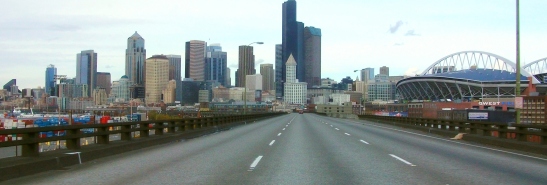
On April 25, 2011, the Seattle City Council rezoned the area south of downtown through the Qwest Field area for taller condos and office towers, similar to what the other photos in this post show, located north of downtown. There is no traffic since this was late on a Saturday or Sunday afternoon on SR-99.
More Smart Growth in Seattle …
Here are more Ugly, Towering condos in Seattle with no trees and secluded balconies that will never see the sun. If smart growth was really “green,” then it would be surrounded by native trees, vegetable gardens, vineyards, and fruit trees. Instead, we see towers with no balconies and no trees.
Here’s another example of the region’s lack of progress on alternatives to foreign oil. This bike lane is very dangerous, and most drivers cannot interpret the sign. I am sorry to see this. This would never happen in a more progressive city such as Durango, Colorado and Ashland, Oregon, where 25% of the population either bikes or walks to work or works at home (ref: the pro-smart growth web site http://city-data.com, for each respective city). In Seattle, that figure is well under 5%, and even less for light rail ridership.
Seattle’s economy requires efficient road transportation networks for cars and buses. There is definitely a place for walking and cycling to work, but it’s in very small college towns with lots of forests and trails, like Ashland and Durango. Seattle needs the 6% additional freeway lanes, as Kemper Freeman’s engineers found this would decrease congestion by 36%, while light rail would do nothing.
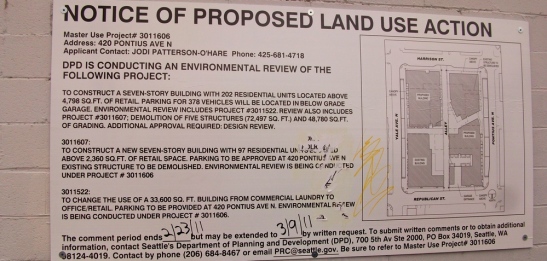
Proposed land use action for more speculating for Towering Condos north of downtown Seattle. Will they sell?

The south side of the Seattle Athletic Supply building for lease, for mixed use (see next photo below). Photo taken in April, 2011. “Newsradio 710 KIRO” does not exist anymore – old sign, although noted anti-smart growth radio host Mike Rosen’s “Newsradio 850 KOA” is managed by the old 710 KIRO manager Kristine Olinger!
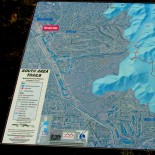
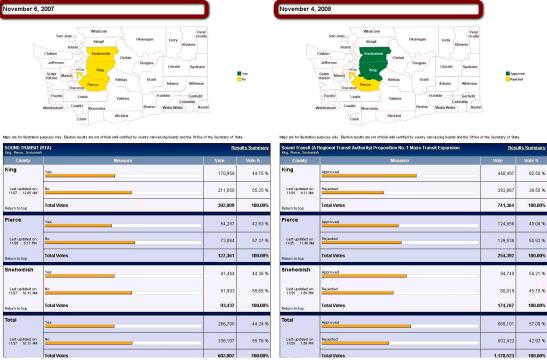
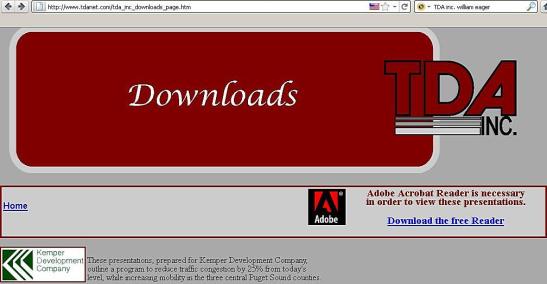

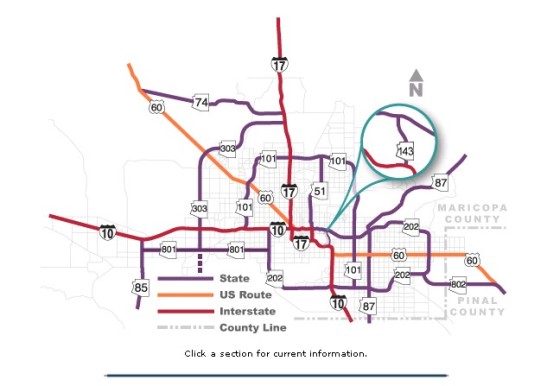

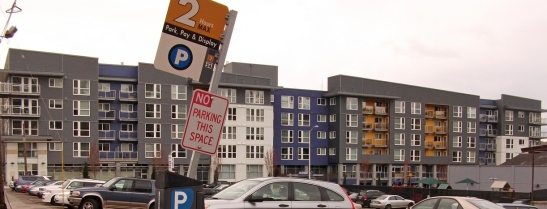
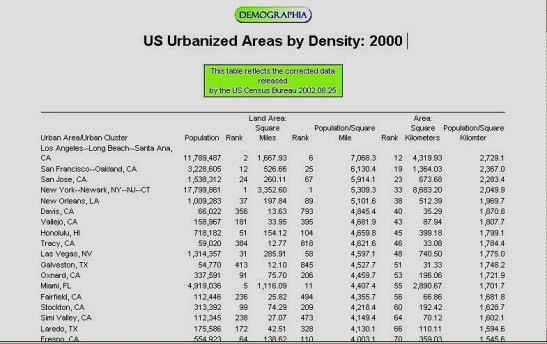
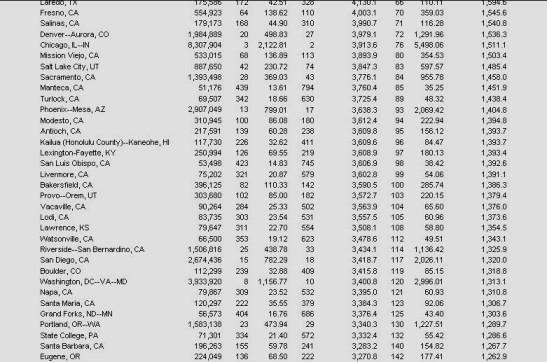

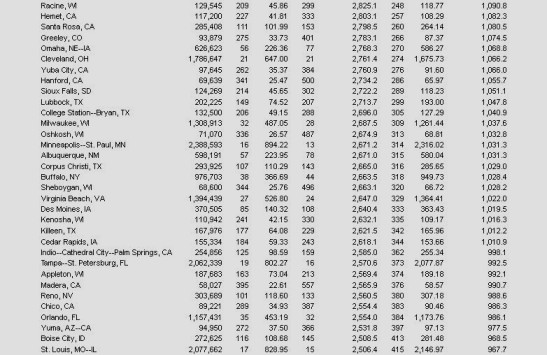
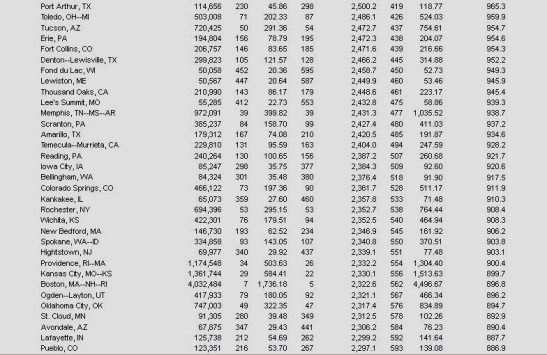

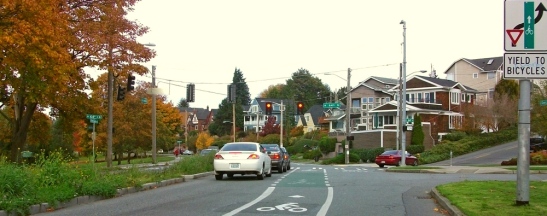

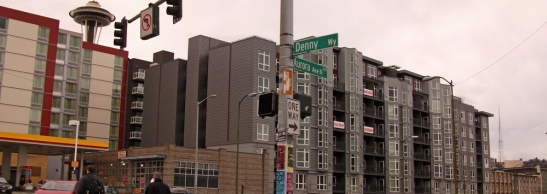


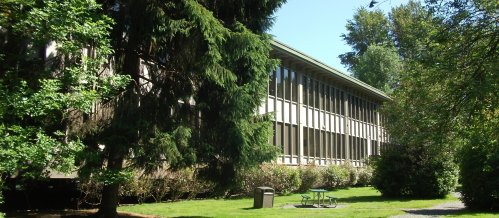
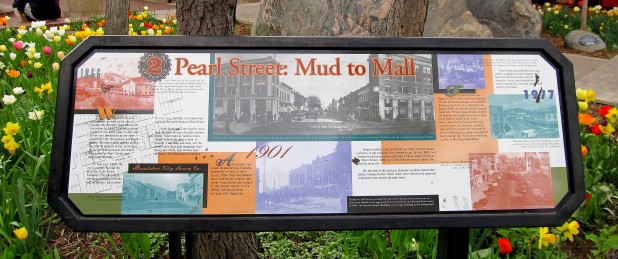

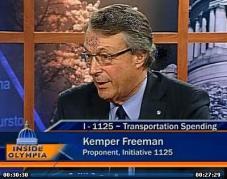
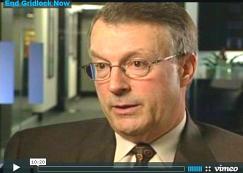
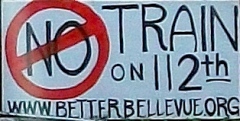

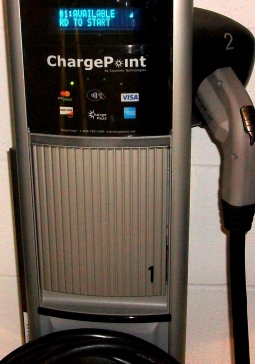


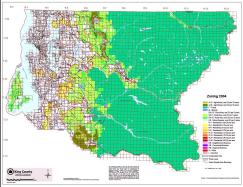
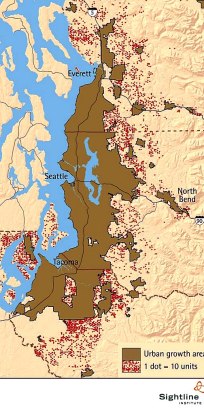
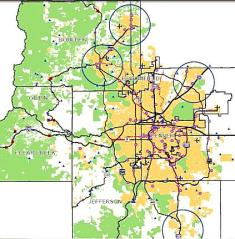
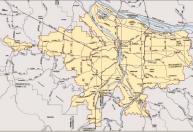
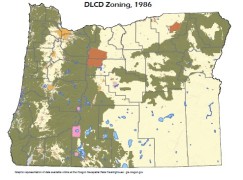
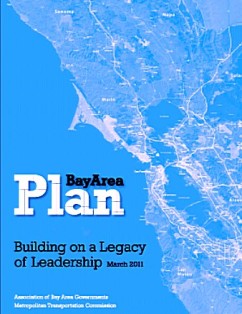

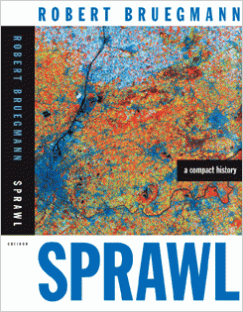
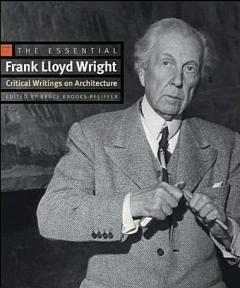
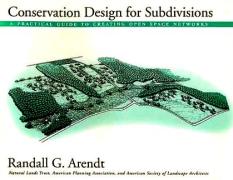
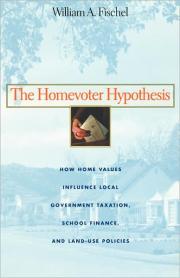
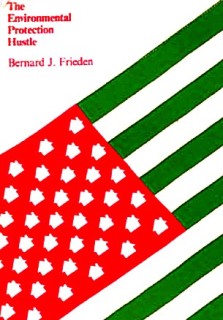
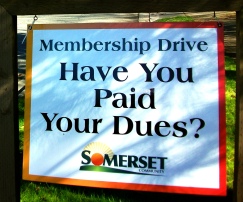
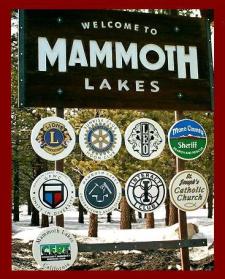
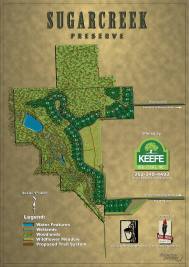

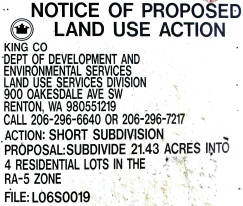
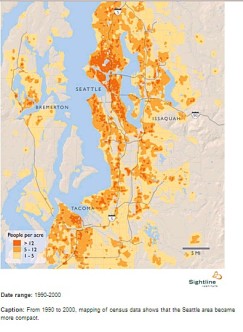
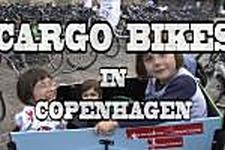
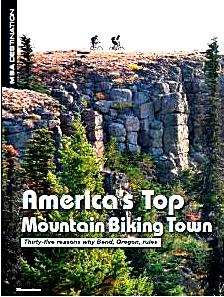
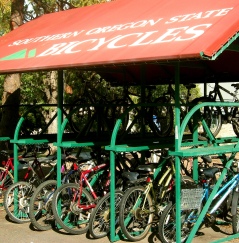

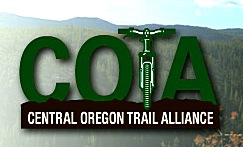

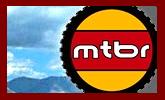




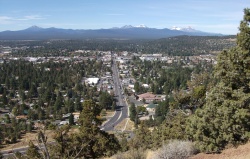
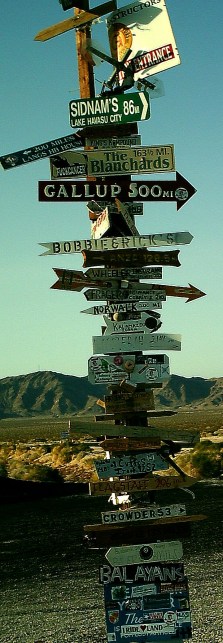



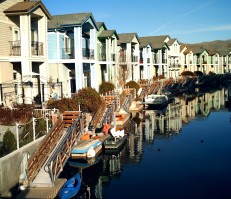

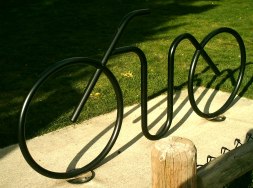
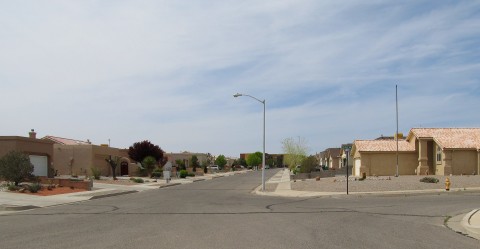
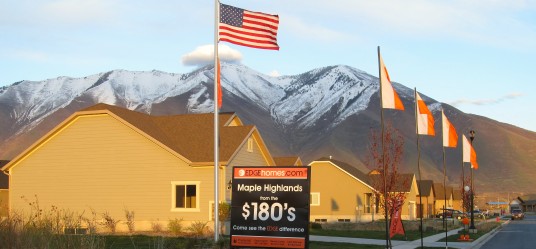
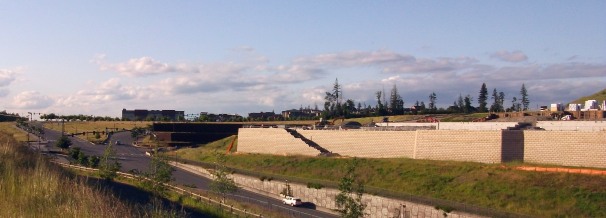


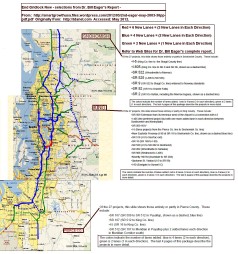
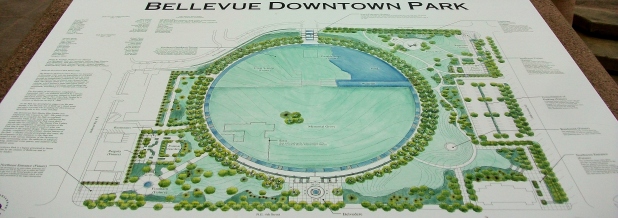


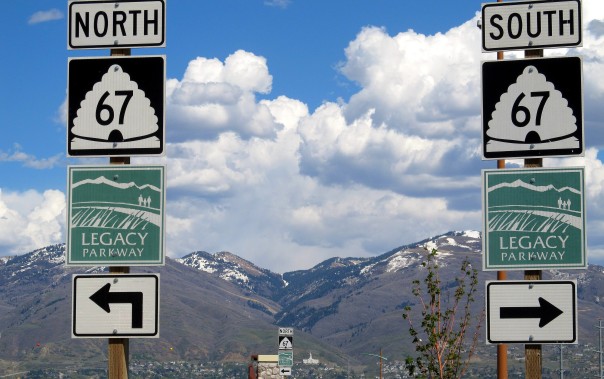
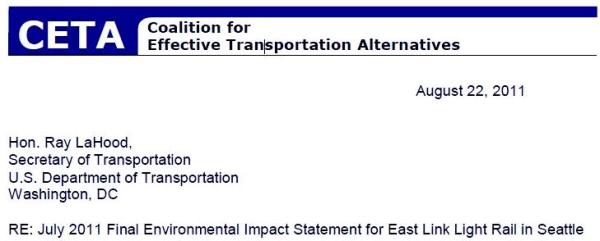
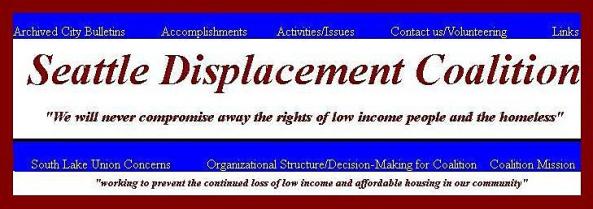
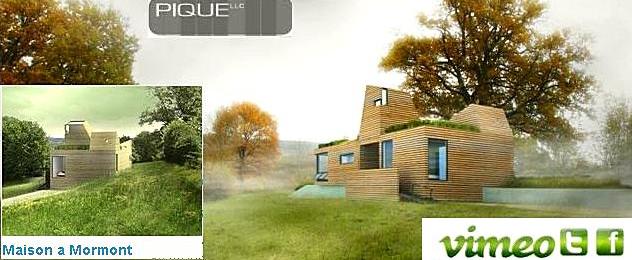


Wow, I’m not even sure how to respond to this post. First, a little background to put my opinions into perspective for you: I grew up in car-happy Los Angeles, and have lived in Seattle, the San Francisco Bay area, and a couple cities in the Midwest and South. The friends I hang out with come from all over the country, and work in a variety of fields. We all fit in to Gens X and Y. Most of us don’t agree with your generalizations about what Gens X and Y want in transportation.
I find more young people moving to the cities, including Seattle, because of the energy, life, and social connections that are made in them. Yes, there are ugly condo towers, and crime, but that’s the price we pay to live in a place with vitality. Half of my friends work in Bellevue or Redmond, and commute back to Belltown at the end of the day. The other half of my group of friends works downtown, enjoying the lack of commuting anywhere. When I was in San Francisco, it was similar; I knew a ton of people that lived in The City but worked in San Jose or some other suburb. Nobody wanted the big house, or the freeways; they wanted to live close to the culture, the nightlife, the restaurants and people.
Light rail adds to a city in ways that car-centric suburbanites have difficulty understanding. Tourists easily catch light rail from the airport, coming in to the city and infusing our economy with outside cash. It allows people that live here to reach other areas to spread our money around. If light-rail reached from Seattle to Bellevue, some of us might even make it over to your city to add to your tax coffers. Assuming we don’t get run over by cars trying to cross the freeways you call city streets 😉 My friends that bus over to avoid traffic would likely stop paying to own and maintain a car, if they could easily catch a train over. Just think… less traffic for you to deal with!
For real, though: I don’t expect to change your opinion on anything. You like freeways, you don’t mind sprawl, and you love the less frenetic pace of the suburbs. Point is, not all of Gen X and Y think the same way as you, as shown by population growth and migration to urban cores in recent years. A good chunk of us aren’t anti-freeway or even anti-car, we’ve just moved beyond them. We’re apathetic about freeway traffic and live in dense places that don’t have room for more lanes. Light rail and bike lanes are things that do affect us on a daily basis, and that’s where I choose to spend my tax dollars.
Jesse –
Generally speaking, if you look at most cities in the US, the vast majority of those in their 20’s, 30’s, prefer to own a car, and drive it at 65mph 24:7. Those who favor smart growth and mass transit are limited to markets such as Seattle, Portland, Eugene, San Francisco, and Denver. They do not represent the majority nationwide, who prefer owning cars.
Once singles get married, they prefer the suburbs due to safer schools and private yards for their kids.
Given that it’s too expensive to ever build enough light rail lines connecting each and every suburb to cities where people work, then our best answer is to increase freeway capacity, as demonstrated by Kemper Feeman’s engineers.
I don’t really like sprawl in its current form, because its become too dense. Lot sizes have been decreasing dramatically ever since the 1950’s, when they reached an all time high. I favor lot sizes of one half to one acre, along with native tree protection ordinances. The higher the density, then the higher the air pollution that cyclists breath in – whether you’re talking about towering condos downtown, or, smart growth townhomes in planned unit developments in the suburbs.
And, you mention living close to amenities and nightlife. There are many smaller college towns that offer this same environment, with less traffic – such as Bend, Eugene, Fort Colins, Prescott, Flagstaff, San Luis Obispo, etc. These cities have a lot of young people who have left Seattle, L.A., and San Francisco, precisely because of the high density smart growth, and high crime.
In fact, these smaller cities are where I would live, if they had jobs in my field. And, I’d park the car and cycle everywhere, saving money on gas. However, I would not have the patience to bike through the Seattle City Limits. So we do agree on the bicycling concept, although in entirely different types of cities. -Tom